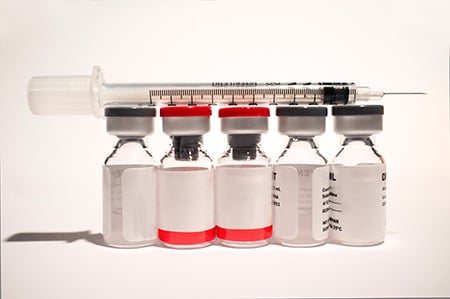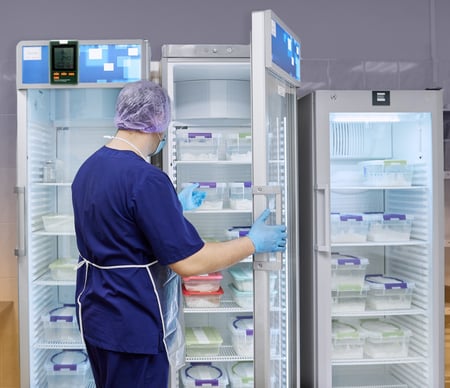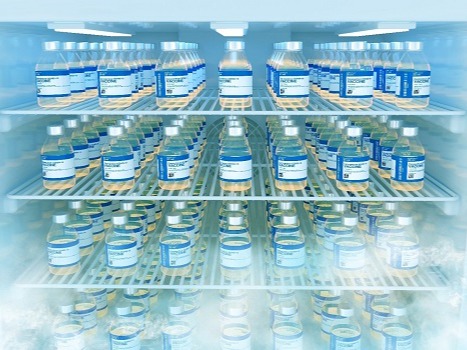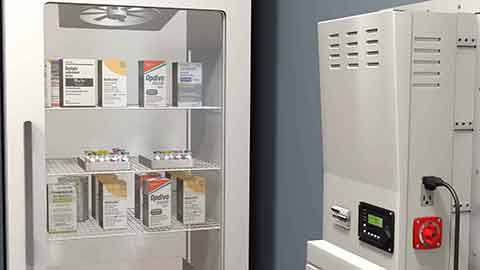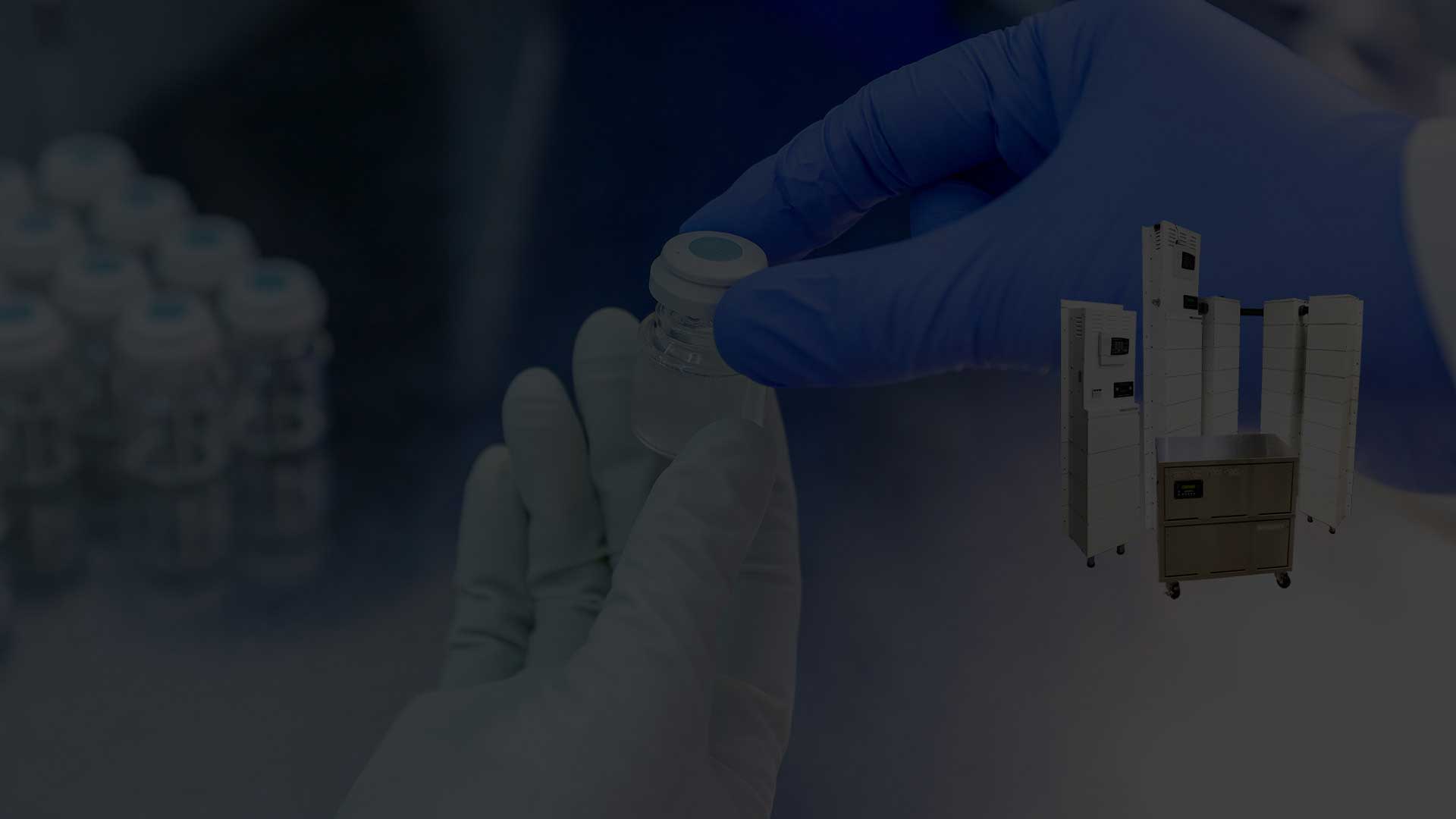What You Need To Know About Handling Vaccine Diluents
Diluents are a crucial part of any immunization process. So knowing the best ways to handle them is non-negotiable. The World Health Organisation makes some recommendations regarding the storage and handling of diluents, and this article delves into those recommendations.
Handling Vaccine Diluents
The World Health Organisation recommends the following when using vaccine diluents.
- Don’t reconstitute a vaccine with a different diluent from the one the manufacturer specifies
- Don’t replace a vaccine diluent with water for injection
- Don’t inject an oral vaccine or a diluent used to reconstitute an oral vaccine
- Don’t freeze a diluent containing an active substance
- Don’t use a reconstituted vaccine if you observe a foreign particulate matter
Diluents for oral vaccine
These types of diluents are not formulated for injection as they typically have significantly large volumes per dose. They also lack sterility characteristics and constituents required for sterile injection. Thus, injecting them into a patient can cause severe injury and even death to the recipient.
Diluents with active substances
When a vaccine requires an adjuvanted diluent, you must ensure that you use the appropriate diluent. Some of these diluents are also freeze-sensitive, so you have to store and transport them in the cold chain with the same care as other freeze-sensitive vaccines.
Volume of diluents
Diluent manufacturers prepare each diluent for their specific vaccine, and the diluent's quantity is typically matched precisely to the required volume and concentration after reconstitution. Thus, you must withdraw the total contents of the diluent vial with the reconstitution syringe and add it to the vaccine for reconstitution.
Please inspect the vaccine visually for any foreign particulate matter after reconstitution and before administration. Do not use the vaccine if you observe any foreign matter in the reconstituted vaccine. Instead, discard it and lodge an official report for follow-up investigation.
Best Practices For Storing Vaccine Diluents And Managing Inventory
If you consider storing diluents long-term, keep them in the temperature range of 2oC to 8oC unless the manufacturer specifies otherwise. However, this storage method may not always be practical or cost-effective, and some diluents can be safely stored outside the cold chain.
Thus, if your facility’s cold chain storage capacity is limited, ensure you store diluents that are not packaged with vaccines at room temperature. However, you should only do this if the manufacturer’s instructions allow it. Again, it would be best to take special care and always use the correct diluent with the designated vaccine.
Also, make sure you follow the manufacturer’s instructions regarding cooling before reconstitution. Furthermore, ensure that you keep an adequate number of needles and syringes for all vaccines and diluents.
Never freeze diluents. If a vaccine comes packaged with its diluent, store the product at 2oC to 8oC. Also, never freeze bundled liquid-lyophilized combination vaccines and keep them stored at 2oC and 8oC.
Effect Of Temperature On Diluents
When diluents are frozen
Freezing diluents exposes them to high risks of losing their potency. For example, DTP-containing vaccines' diluents are adsorbed onto an aluminum matrix, which acts as an adjuvant. Freezing destroys this matrix and lowers the diluent’s efficacy. Additionally, the glass vials or ampoules in which many vaccines come are not resistant to freezing and could crack, contaminating the contents and wasting them.
The effect of heat on diluents
Some manufacturers state that their products can be stored outside the recommended range. However, such diluents should be cooled to between 2oC and 8oC before using them to reconstitute vaccines. Cool the diluents to within this temperature range for at least several hours (preferably twenty-four hours) before use for reconstitution.
Storage And Temperature Monitoring Of Diluents
As much as possible, store vaccines and diluents in a refrigerator you have reserved for this purpose. However, if you are short on storage space and need to store drugs, ointments, sera, and samples in the same place, keep them in a separate storage container or box in the refrigerator. Also, label them clearly and keep them completely different from the diluents and vaccines, preferably on the bottom shelf of the fridge.
The WHO recommends that you monitor the fridge carefully for good temperature readings according to recommended temperature monitoring principles and respond appropriately when there is an excursion from the optimal temperature range.
The temperature monitoring recommendations for diluents in the cold chain are the same as for vaccines. You must monitor the temperatures and keep an up-to-date record, ensuring that you achieve the following objectives:
- Verifying that the storage temperatures are within the recommended range in your cold rooms and vaccine refrigerators
- Detecting out-of-range storage or transport temperatures so that you can take the necessary corrective action
Stocktaking And Record-Keeping
If diluents are packaged separately from their corresponding vaccines, treat them as individual products in your stock ledge or inventory management software (regardless of its cloud based or locally stored).
Thus, prepare separate stock cards for each diluent and indicate which vaccine should be reconstituted with it. If your stock management program is computerized, link the diluent item to the appropriate vaccine item for additional stock control and reduced error margin in the distribution and usage for reconstitution.
Finally, account for each vial dispatched and used the same way as the vaccine and match the number of vaccine vials to their specific diluents.
When there is a mismatch in the diluent vaccine ratio
Suppose you find a mismatch in the quantity of diluents relative to vaccines, balance things in any of the following ways:
Excess diluent
- Check whether you can distribute the excess diluents to another facility where they may not have enough diluents. Remember that you cannot interchange diluents.
- If you cannot move the excess diluents to other facilities, then destroy them following your SOP for such situations.
Insufficient diluent
- Check whether you can get diluents from higher-level stores or the same vaccine manufacturer.
- If you can't get it from a supplier, see whether you can get it from another health facility with excess diluents.
- If you cannot get any, then destroy the excess vaccines using the SOP for such situations. Do not use the diluent of another vaccine if the diluent stock is short.
However, it is crucial that you carefully review your stock to isolate the reason for the discrepancy in the diluent vaccine ratio. Your facility may want to consider a program which tracks inventory like a digital stock control system ( also called a stock transfer ledger or stock ledger).
How to Avoid Vaccine Transportation and Still Maintain Proper Vaccine Temperature
For end users of pharmaceuticals, the most likely scenario for them to experience a temperature excursion is because they’ve left the door open to a medical refrigerator/medical freezer or it has stopped running.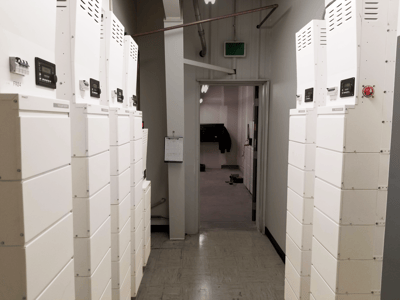
While door alarms and buffered temperature probes are fairly easy to source tools, a reliable and powerful backup power system for refrigerators can be harder to find.
Luckily, battery backup systems offer instant and automatic power for medical appliances as soon as the power goes out. As a result, no staff needs to be on-site to keep track of or start the generator and vaccines will continue to remain safe—with no extra work required.
Additionally, their vertical, cabinet-like design and leak-proof batteries mean they can be installed in even the tightest spaces and oriented in anyway to make them fit. Plus, if your medication or vaccine room is truly tight on space, a hardwired backup power unit can instantly supply remote power to your appliance—directly via the outlet its already plugged into.
Regardless of what kind of system is the best fit, they ensure that your entire stock of vaccines are protected from a sudden loss of power (and the resulting temperature excursions) by guaranteeing a seamless transition from utility power to backup power.
Even better, is that battery generators can be outfitted with as much power as you want. So, systems can be designed with enough power to protect a facility’s inventory:
- Overnight
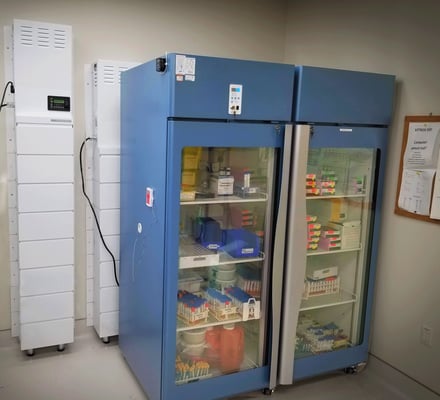
- All day
- Over a weekend
- Or even for a whole week.
So, to protect your facility from tens of thousands of dollars in lost vaccine stock, speak to a Medi-Products battery backup expert.
They’ll help design you a system that both meets your power needs and will fit inside your facility—for a much lower cost than what your vaccines are worth. So a backup power system pays for itself the first time your power goes out.
Designing a custom system is as easy as taking a picture of your appliance’s nameplate, and a photo of the room where it’s in.
Then, you just email both photos to our Product experts, and we’ll provide you with multiple options for backup power protection.
For more information contact: 1.800.7653237
